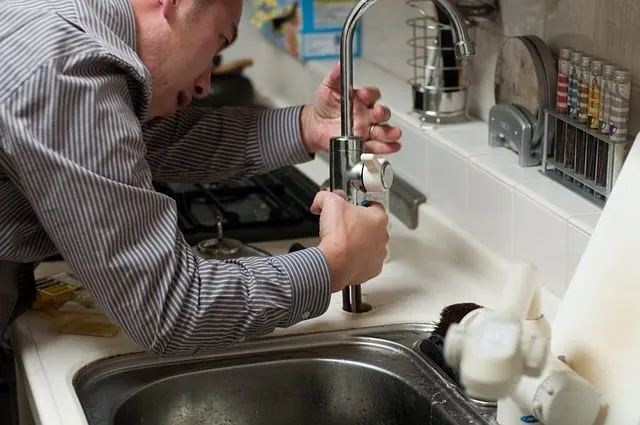
Running water is a homeowner’s best friend. But when you find a big pool of water somewhere, it can fast become an enemy instead. If you catch a leak early, you can save yourself a world of pain, inconvenience and cost. The problem is learning how to find one, as there are so many places a leaky pipe could be lurking—especially when you’re dealing with plumbing issues in older homes.
With that in mind, here’s what you need to know.
-
Watch the Bills
It’s important to keep an eye on your finances in general, but when an unexpectedly high water bill comes up, don’t just moan and deal with it.
Ask yourself if you did anything to cause it, such as filling a pool or watering the garden or lawn excessively. If you didn’t, well, there could be a leak somewhere.
Unless it’s a large leak, you might not notice an increase in the water costs straight away.
But it can build up, so keep a monthly tally of the last two years. Then, if you notice this year that everything’s a tiny bit higher, but your usage stayed the same, it’s time to call a plumber.
Before you call however, make sure you choose a plumbing service that provides upfront no-risk pricing. For more information, click here: fixitrightplumbing.com.au/leak-detection-melbourne/.
-
Check the Meter
If you suspect a leak, you could always check your water meter before making the leap and calling in outside help. It’s an easy task if you know where your meter is located.
First, make sure no appliances are using water. Then have a look at the water meter. If it’s moving right before your eyes, then there’s a definite leak somewhere in the home or garden. Don’t waste time trying to determine where. Instead, you need to call a plumber immediately in case it’s causing extensive damage.
If the meter doesn’t move, wait a few hours.
Get everyone out of the house if you can to avoid accidental usage. If no person or appliance is using water and you see a change in the meter, there’s a slow leak afoot.
To locate this leak, shut off the water and wait a few hours again. If the number has changed again then the leak is outdoors. If it’s been stationary, it’s indoors. Now that you’ve determined the general area of the leak, you can try and find it to fix the issue yourself or to be able to pinpoint the plumber to the right area.
-
Watch the Grass
A patchy lawn is never desirable, so when mowing you do your best to keep it all the same height. But if some patches are growing faster, and appear greener, then it may not be your fault. You could have a leaking waterline under that patch. Have a plumber check it out, just to be safe.
-
Check Your Appliances
If the leak is inside, check your faucets, investigate behind the dish or clothes washer or anywhere else there might be a water leak. If there’s a puddle leaking out from under something, then it’s an obvious sign of a leak.
Sometimes the leak won’t have progressed enough to have formed a puddle yet. That’s when you need to start moving things out of the way.
If the leak comes from directly behind or under an appliance, see if you can cover it with a very strong tape until a plumber can get there. This way, you save yourself a mess and possible damage to your home.
-
Use Dye
If you have a leak you can’t locate and suspect it’s in the bathroom, test your toilet. A small amount of food coloring will suffice.
If your toilet is functioning normally, pouring food coloring into the tank won’t do anything. But if the tank has sprung a leak, the color will show up in the bowl rapidly, in under 10 minutes. Just make sure you don’t flush during that time.
The good news is, it’s probably just the flapper. Someone with decent DIY skills should be able to handle that issue. But if you have any doubts about how to do it at all, call a plumber. You don’t want to risk putting such an important appliance out of action.
-
Do Regular Checks
You should check behind and inside cabinets and large pieces of furniture on occasion. There could be a leak somewhere in the back of an unused cabinet, and that’s what’s been causing the funny smell you can’t place.
Older homes will be more susceptible to plumbing issues, so if your house is older than 25 years, you might want to make this a monthly or even weekly thing. Diligence will save you lots of headaches if you catch problems early and get leaks fixed.
If you’re not sure what you’re looking for, here are some clues:
- Mold
- Bubbling wallpaper
- Damp patches on the walls
- A musty odor
- Sagittarius Man & Gemini Woman Love and Sex Compatibility - January 31, 2024
- Taurus Ascendant Rising Personality Traits in Men (Guide) - January 31, 2024
- How to Seduce and Attract a Sagittarius Man (Seduction Tips) - January 31, 2024
